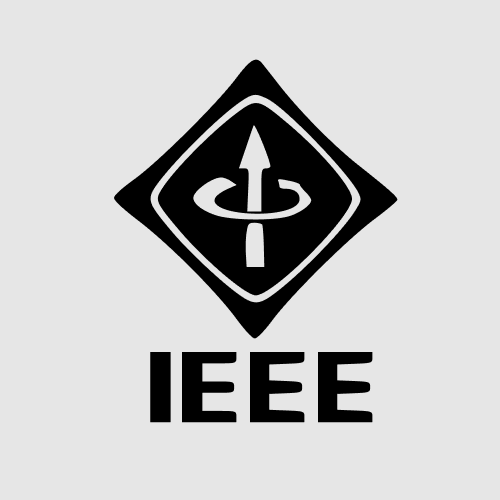As a student, you might dodge group projects or skip optional essays depending on your major, but one task you’re bound to face is citing scientific papers. Understanding how to properly cite scientific research is non-negotiable, as it’s likely to become a part of your thesis or a requirement for a course. It may look like it’s not a big deal: all you need is the paper’s title, authors, journal, and publication date. You’re right, but how do you know which order to place them and where all those commas and colons should go in different styles?

✅ AI Essay Writer ✅ AI Detector ✅ Plagchecker ✅ Paraphraser
✅ Summarizer ✅ Citation Generator
Best Citation Styles for Science Papers
Selecting the right citation style often depends on your field of study, the journal you’re targeting, and the preferences of your educational or research institution. You can choose from several styles in our free citation generator tool. In the sciences, where clarity, precision, and functionality are predominant, certain styles have become widely used:
APA (American Psychological Association): Primarily used in psychology, education, and other social sciences, the APA style focuses on the author-date format which helps emphasize the recency of the research. The style is known for its stringent guidelines on referencing that ensure clarity and uniformity, making it easy for readers to follow the research line.
Harvard: This author-date system is widely applied across many scientific disciplines due to its straightforwardness. It integrates brief citations within the text, linked to a detailed reference list, allowing for ease of access without disrupting the flow of reading.
Vancouver: Adopted by medical and scientific journals, the Vancouver style uses a numeric system where each source is assigned a unique number that corresponds to a numbered list in the reference section. This style is especially useful in medical fields as it accommodates the frequent citation of sources with numerous authors and complex information.
IEEE (Institute of Electrical and Electronics Engineers): Common in engineering and computer science, IEEE style uses a bracketed number system in line with the text that corresponds to a comprehensive list of references at the end. It is designed to support clarity in fields where articles might be heavily laden with citations.
AMA (American Medical Association): Predominantly used in the healthcare and biological sciences, AMA features a number-based citation system similar to Vancouver. It is designed to streamline citations, especially in articles that include numerous studies by multiple authors, which is a common scenario in medical literature.
General Rules for Citing Scientific Papers
When students think of reasons behind citations they primarily see them as a necessary step in avoiding plagiarism. And this is true, of course, from a student’s perspective or any other regular user. However, citing sources is also required to help readers locate the original sources of information. They may want to check the original idea or thesis or to see its author’s arguments. When you set out to cite a scientific paper, irrespective of the citation style, you’ll need to compile certain fundamental elements.
Every citation, regardless of format, must fundamentally identify the paper’s author(s), publication date, title, and where it was published. These details provide a roadmap to finding the source material.
👨🏻💻 Author(s): The creator(s) of the paper.
📅 Publication Date: When the paper was published.
📇 Title of Paper: The name of the research article.
📓 Journal Name: Where the paper was published.
7️⃣ Volume and Issue Numbers: These help identify exactly where the paper can be found in the journal.
📑 Page Numbers: The span of pages the article covers.
🌐 DOI or URL: Digital Object Identifier or a direct web link to the paper.
Each element can be located on the first page of the scientific paper or within the journal’s listing. Additionally, if you use reference-finding tools and add your sources to a personal library in reference management software, all this information is available right there.
How to Cite Scientific Papers
As we already mentioned, there are numerous citation styles, and choosing the right one is critical, as different academic disciplines and journals have specific formatting requirements. Here’s a look at how to cite the example paper in five popular styles used in scientific writing:
 Harvard
Harvard
Harvard style emphasizes the author and the year of publication in the text, which highlights the timeliness of the research. It’s widely used across many fields, including business, social sciences, and natural sciences.
Format Description: The reference list entry starts with the author’s last name, followed by the initials, year, title of the paper, journal name, volume, issue, page numbers, and DOI (URL).

 Vancouver
Vancouver
Vancouver style is notable for its numeric referencing which is practical for papers with many citations. It’s frequently used in the medical sciences.
Format Description: Citations are numbered consecutively in the order in which they appear in the text. Begin with the author’s last name, followed by the initials, title of the paper, journal name, year, volume, issue, page numbers, and DOI (URL). Each number then corresponds to a full citation listed at the end of the paper.

 APA
APA
APA style provides clear guidelines on author formatting, date placement, and reference list structure, emphasizing the currency and readability of sources. It’s strongly associated with psychology, education, and the sciences.
Format Description: Includes the author’s last name and initials, publication year, paper title, journal name, volume number, issue number, page range, and DOI (URL).

 IEEE
IEEE
This style uses bracketed numbers within the text, which are less disruptive to the flow of reading for technical documents.IEEE is the first choice in engineering and computer sciences for citing references.
Format Description: The reference list is numerically ordered, and each reference corresponds to the numbers used in the text. Start with the author’s initials and last name, then the paper title, next the journal, volume number, pages, date, and finally DOI.

 AMA
AMA
AMA citations are numbered in order of appearance and often include a lot of detail for precision and repeatability in scientific experimentation. The AMA referencing style is primarily used in medicine and related disciplines.
Format Description: The reference list is numerically ordered, and each reference corresponds to the numbers used in the text. The full citations include authors, title, journal name, year, volume, issue, page numbers, and DOI (URL).

With these guidelines and examples, you should be prepared to cite scientific papers across various fields and formats accurately, making your academic work scholarly and professional.
FAQ
Follow us on Reddit for more insights and updates.





Comments (0)
Welcome to A*Help comments!
We’re all about debate and discussion at A*Help.
We value the diverse opinions of users, so you may find points of view that you don’t agree with. And that’s cool. However, there are certain things we’re not OK with: attempts to manipulate our data in any way, for example, or the posting of discriminative, offensive, hateful, or disparaging material.